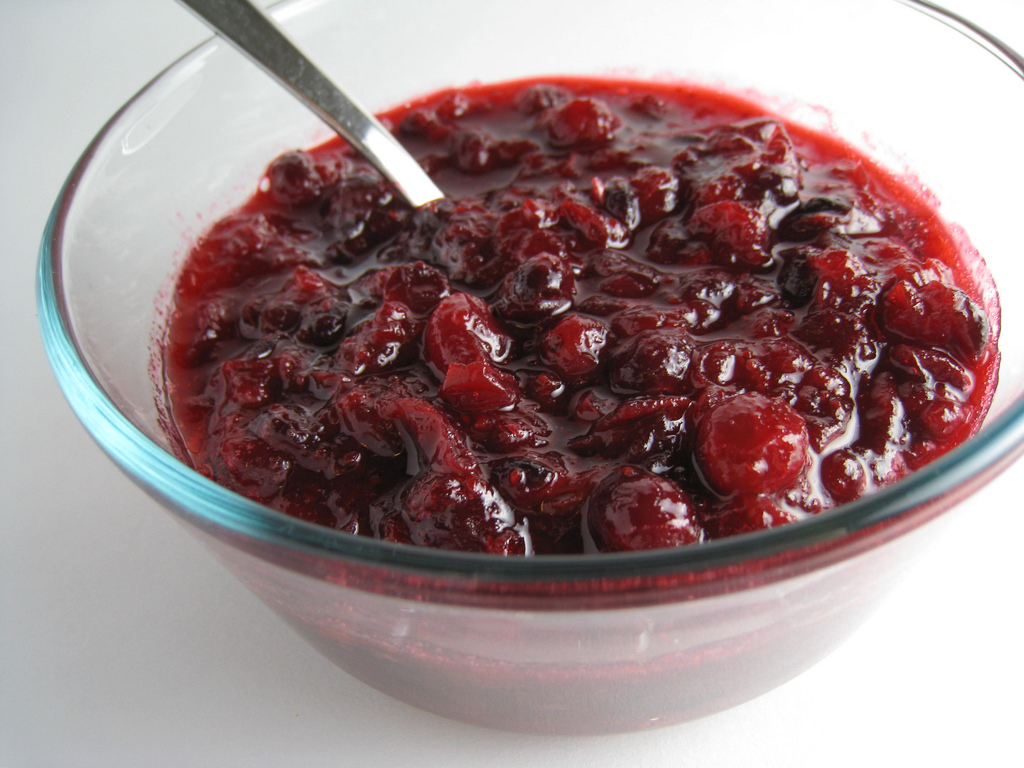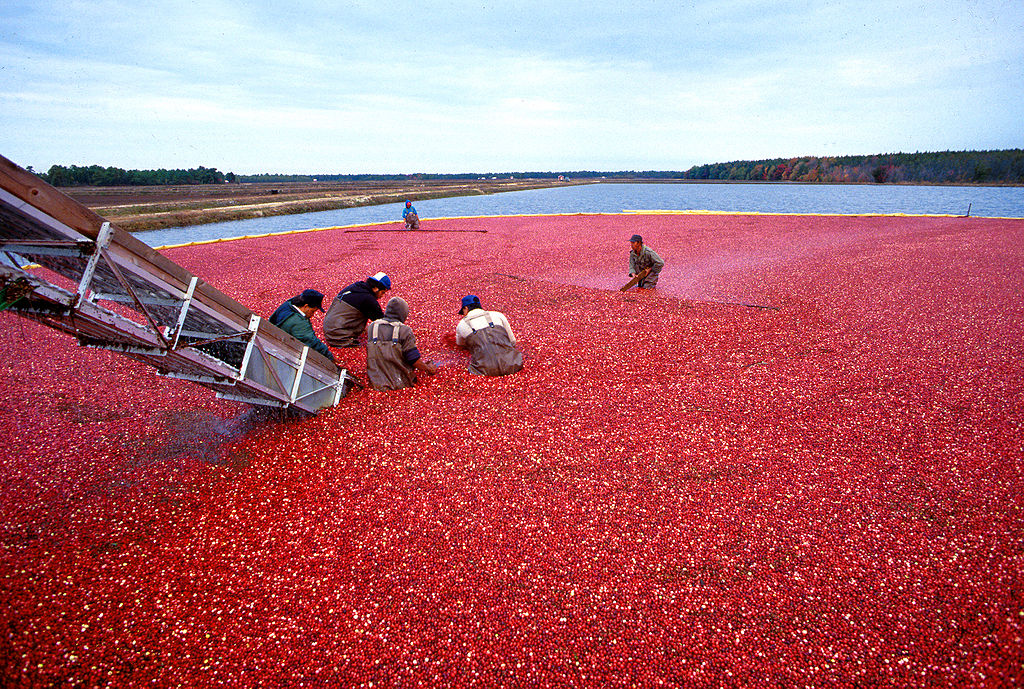In recent years, the fruit’s popularity has drawn more and more growers into the market, and the supply chain has become glutted. Don’t be surprised if you see cranberries showing up in unusual places at unusual times of year.

American growers have long been cultivating cranberries, primarily in Wisconsin, Massachusetts, New Jersey, Michigan, Oregon and Rhode Island, and in many parts of Canada. Until about 1930 the market was almost entirely geared toward the fresh fruit, but it’s now a year-round market driven primarily by preserved cranberries, like dried cranberries and canned cranberry sauce. Prices and demand grew steadily, even as improvements to cultivation practices increased supply.
But eventually the market became saturated. Prices peaked at $65 a barrel (or 15 cents a pound) in 1996, luring still more growers into the market before the inevitable crash in 2001, when cranberry prices dropped to $18 a barrel. In 2008, the USDA began purchasing surplus cranberries, primarily in the form of sauce, dried sweetened cranberries and cranberry juice concentrate (a byproduct of the other two), in order to support prices. The agency bought more cranberries in 2016, following a nearly $100 million purchase in 2015. The purchased cranberry products go to school lunches and other institutional kitchens, including food pantries. In 2014, nearly 68 million pounds were routed this way.
Wisconsin Rep. Ron Kind, D-La Crosse, represents the heart of cranberry country in a state that produces more than half the world’s crop. Kind has been outspoken about his opinion that the USDA purchases are vitally important to the industry at this sensitive time, but has also cautioned that the industry should not become too used to these purchases, because they will hopefully be phased out. “I keep warning the growers not to become too dependent on the USDA purchasing program,” Kind told Food + City in a phone interview.
While cutting the surplus supply is a tricky political proposition, growing the market, Kind says, is the best way out of the situation. And he sees increased international demand as the best chance of doing so. Currently, 25-30 percent of the crop is being sold overseas, and international demand is growing by 6 percent a year. Kind’s ambitions to grow the market are a big reason why he supported the Trans-Pacific Partnership Agreement (TPP) trade deal. Export tariffs will go to zero, he says, and Canada, the world’s second largest cranberry producer, will have a tougher time flooding the U.S. market with cranberries, as import tariffs like the ones Canada uses to keep out American cranberries will be banned. “This will give us greater ability to export to Canada.”

Western Europe, especially the United Kingdom and Germany, are the biggest customers. Mexico is a major user too, Kind says. Cranberries are also making their way into Asia, where markets are small but growing.
Kind is also a member of the House Cranberry Caucus, which helped secure $1.6 million in 2015 to be used in growing the cranberry market, including the funding of research into the health benefits of cranberries.
Tom Lochner, executive director of the Wisconsin State Cranberry Growers’ Association, agrees that there is a lot of potential in the health benefits of cranberry products. But taking advantage of this is problematic in two particular ways, Lochner tells Food + City. For one, the cranberry’s reputation as a treatment for urinary tract infections is not the kind of sexy benefit you want to hang your marketing campaign upon in perpetuity. Lochner is very excited about recent research on proanthocyanidins, which are believed to be responsible for the cranberry’s legendary UTI-fighting ability. Proanthocyanidins act by preventing the bacteria from adhering to tissue, thus preventing an infection from getting established.
“Antibiotic resistance is spreading. Cranberries may hold a partial answer to helping address that issue,” Lochner says. “When the proanthocyanidins are in there the bacteria can’t adhere, so it gets flushed out of the system.” He says there are potential opportunities for cranberries in pharmacological applications, like cranberry powder as a dietary supplement.
But despite the high levels of vitamin C, antioxidants, proanthocyanidins and other beneficial compounds, another health-related challenge that cranberries face is the fact that they are so tart that, for most palates, they must be sweetened in order to be edible. Meanwhile, the USDA Dietary Guidelines Advisory Committee will likely place caps on added sugars for the upcoming rounds of guidelines, which will be in effect for five years.
A prohibition against added sugars, or limits in how many added sugars a person should consume in a day, would send shockwaves down the cranberry supply chain — in particular the USDA purchasing program, which is bound by the dietary guidelines and would be limited in how many cranberry products it could purchase and legally feed to the public.
Lochner bristles at this possibility, which he calls “one of the largest issues we face in the marketplace.” The labeling of added sugars “has no basis in science,” he says. “Physiologically there is no difference between how sugars are digested.”
“Cranberry products are not empty calories,” he says.
But if the USDA does, in fact, put limits on added sugars, the cranberry industry will find other ways to move their cranberries. Juice blends, for example, where the other juices contribute their sweetness without being considered added sugars.
Whatever the final solution, cranberry farmers and their representatives will be working hard to ensure that it won’t come in the form of production cuts.
“You can’t just turn off the spigot, as it’s a perennial crop,” Lochner says. “Canada-grown fruit makes US efforts to limit production irrelevant, so supply management is off the table. Growing demand is what we’re trying to do.”
So, don’t be surprised to see cranberries showing up in unexpected places, in unusual times of the year. Cranberry popsicles, anyone?

Author
Ari LeVaux writes "Flash in the Pan," a weekly syndicated food column that appears nationally. His work has appeared in Outside Magazine, Slate and elsewhere. He lives with his family in Missoula, Montana.